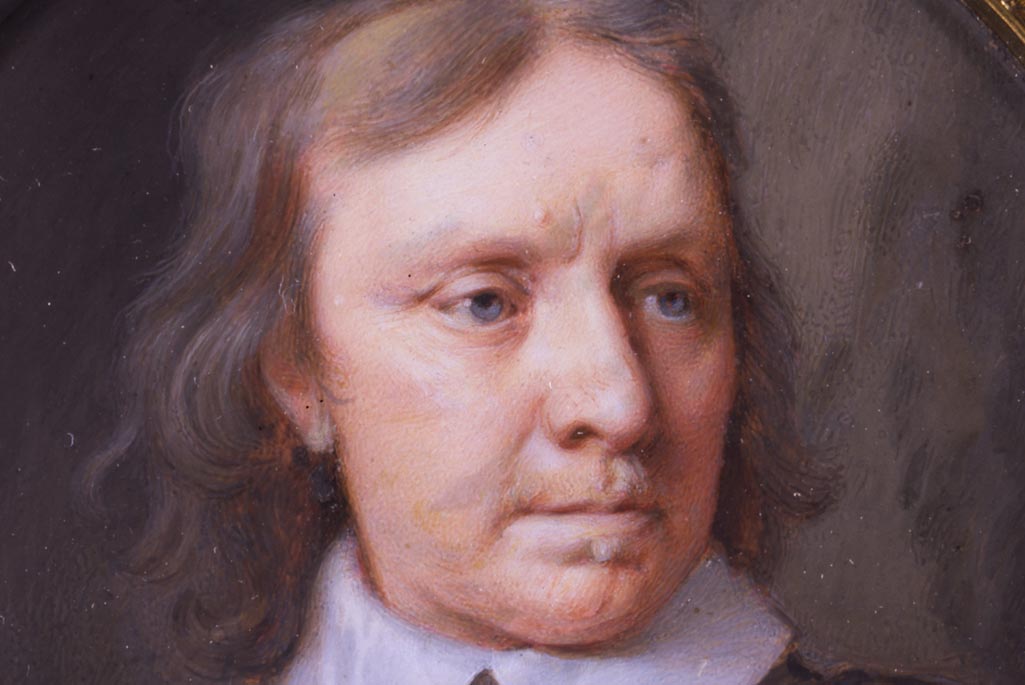The greatest depiction of a wart in the history of art is currently on show in London. You will find it at Philip Mould’s gallery on Dover Street, and you will require a magnifying glass to see it. But get up close to Samuel Cooper’s unfinished miniature of Oliver Cromwell, squint with one eye, and a growth will come into focus so odious, so crusty, so luminous, that you will wonder why Old Ironsides ever asked for it to be included.
Oliver Cromwell (c.1650), Samuel Cooper By kind permission of the Duke of Buccleuch and Queensberry KBE

It is a marvelous depiction, and the print reproductions do it no justice. Peter Lely’s full-scale portrait of Cromwell hangs next to it in the show, and as the catalogue makes clear, it was Lely who copied Cooper, not the other way round. This is a rare example of a full-scale portrait taking its cue from a miniature one, and is testament to Cooper’s virtuosity.
That Cooper is an artist to rival Anthony van Dyck is seldom debated. But he is certainly less eminent; the last exhibition of his work was 40 years ago at the National Portrait Gallery. His relative obscurity has much to do with the format he worked in – miniatures are hard to display, easy to mislay. As Bendor Grosvenor puts it, they are all too often ‘marooned – in a desk drawer, a jacket pocket, a thief’s hand’. But as this show reminds us, Cooper’s miniature work is sublime within the context of 17th-century art. It wasn’t until William Hogarth came along that the English face was comparably blessed.
This is a delicate exhibition, best viewed with a magnifying glass (which the gallery provide). The glass not only focuses the eye, it focuses the mind. I found myself spending far longer on the detail – elaborate ruffs, powdery skin, globular pearls – than I would normally give to a regular portrait of this period. One item that is certainly worth a thorough inspection is Cooper’s self-portrait of 1645. Enlarged, it could rival a number of van Dyck’s works.
A handful of depictions of Charles II are also on show. Despite Cooper’s earlier patronage from Cromwell, he managed to transcend political factions, and continued to receive commissions from both royalists and parliamentarians during the Restoration. Indeed, in the second week after he secured the throne, Charles sat for Cooper. Faced with the task of manufacturing an iconography, the regime had little choice but to turn to the pre-eminent portraitist of the day, despite his links to the regicide.
Philip Mould’s gallery offers a well-researched glimpse into 17th-century English life, and in doing so, shoulders a responsibility normally carried by our more muscular public galleries. Unusually for a private gallery, nothing is for sale. We see van Dyck’s mistress, Margaret Lemon, painted as a man in riding gear – the clothing a sly wink to the viewer, divulging her role as a ‘rider’ of men. A portrait thought to be of Nell Gwyn, complete with fur and lace, recalls the time when she resided in Pall Mall, ‘at vast expense’ to Charles. Some of the other works are poorer in quality – sitters ‘too dull to stir Cooper’s genius’. But take a close look at the characters that did interest him – haughty, jovial, assured – and notice how little society’s foibles change.
‘Warts and All: The Portrait Miniatures of Samuel Cooper’ is at Philip Mould & Company until 7 December 2013.





